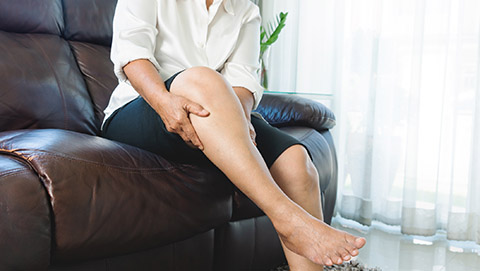10/29/2021

A client had three major cardiac surgeries within a month. Now, several weeks later, she still has numbness in her legs. What in the world is going on? And can massage help?
Join me for a search for how cardiac surgery and nerve damage intersect, and hear what happens for this lucky client!
Resources:
Anesthesia Risks and Complications (no date). Available at: https://www.aegisanesthesiapartners.com/anesthesia-risks-complications/ (Accessed: 22 October 2021).
"CardiacAnesthesiaMadeRidiculouslySimple" (PDF) (no date). Available at: https://anesthesia.ucsf.edu/sites/anesthesia.ucsf.edu/files/wysiwyg/pdfs/CardiacAnesthesiaMadeRidiculouslySimple%20.pdf (Accessed: 22 October 2021).
‘Guideline for positioning the patient’ (2017) AORN Journal, 105(4), pp. P8–P10. doi:10.1016/S0001-2092(17)30237-5.
Patient Positioning During Anesthesia: Supine Position (2019) Clinical Pain Advisor. Available at: https://www.clinicalpainadvisor.com/home/decision-support-in-medicine/anesthesiology/patient-positioning-during-anesthesia-supine-position/ (Accessed: 22 October 2021).
For more information on the Healwell Community, access through healwell.org.


This podcast sponsored by:
About Anatomy Trains:
Anatomy Trains is a global leader in online anatomy education and also provides in-classroom certification programs for structural integration in the US, Canada, Australia, Europe, Japan, and China, as well as fresh-tissue cadaver dissection labs and weekend courses. The work of Anatomy Trains originated with founder Tom Myers, who mapped the human body into 13 myofascial meridians in his original book, currently in its fourth edition and translated into 12 languages. The principles of Anatomy Trains are used by osteopaths, physical therapists, bodyworkers, massage therapists, personal trainers, yoga, Pilates, Gyrotonics, and other body-minded manual therapists and movement professionals. Anatomy Trains inspires these practitioners to work with holistic anatomy in treating system-wide patterns to provide improved client outcomes in terms of structure and function.
Website: anatomytrains.com
Email: info@anatomytrains.com
Facebook: facebook.com/AnatomyTrains
Instagram: instagram.com/anatomytrainsofficial
0:00:00.0 Speaker 1: Ruth Werner's best-selling book, A Massage Therapist's Guide to Pathology, is a highly regarded comprehensive resource that sets the standard for pathology education. Written for massage therapy students and practitioners, this ground-breaking resource serves up a comprehensive review of the pathophysiology, signs, symptoms and treatment of more than 500 diseases and disorders. Learn more at booksofdiscovery.com.
0:00:32.7 Speaker 2: Anatomy Trains is delighted to announce a brand new dissection live stream specialty class in September 18th. Lumbopelvic stability, a one-day layered dissection with Anatomy Train's author, Tom Myers and master dissector, Todd Garcia. The early bird price of $150 is held until September 10th. After September 10th, the price is $250. Come see the body's actual core for yourself. This course will be provided over Zoom webinar, with multiple camera views, live chat and Q and A. Visit anatomytrains.com to sign up.
0:01:15.6 Speaker 3: Hi, and welcome to, I Have a Client Who, pathology conversations with Ruth Werner, the podcast where I will discuss your real life stories about clients with conditions that are perplexing or confusing.
0:01:28.6 S3: I'm Ruth Warner, author of, A Massage Therapist's Guide to Pathology, and I have spent decades studying, writing about and teaching about where massage therapy intersects with diseases and conditions that might limit our client's health. We almost always have something good to offer, even with our most challenged clients, but we need to figure out a way to do that safely, effectively and within our scope of practice, and sometimes, as we have all learned, that is harder than it looks. Today's episode comes from one of the Facebook massage groups that I lurk on, looking for good stories, and I found one. This is a situation that I have never seen myself, but it turns out to be not that uncommon.
0:02:17.9 S3: And the story, shared by a massage therapist in Michigan, goes like this. Okay, for some reason, I'm totally awake at 2:45 AM and my thoughts are on my Friday client with a very specific request. She is mid-60s and has had three heart-related surgeries in very close time proximity, and with that has been under anesthesia three times. What has happened is, it caused her lower body to remain mostly numb. She's looking for some answers and wonders if massage therapy would help. She has her doctor's release for massage, just not deep pressure.
0:03:01.1 S3: Well, this is an interesting situation. It's not quite as dire as I had first thought. My first impression was that, this numbness had persisted for several months, but it's more like a matter of several weeks, and that turns out to be not optimal, but not uncommon. But how it connects to cardiac surgery, is a bit of a puzzle. The first thing I wanted to know is, if numbness is a typical complication of anesthesia, and long-term numbness is not the most common complications related to general anesthesia, which is what is needed for cardiac surgery, include anaphylaxis, if the patient is allergic, and then this list from a resource that I will give you in the show notes. The list of common complications related to anesthesia includes sore throat, nausea and vomiting, damage to teeth, lacerations to the lips, tongue, gums and throat. All of this has to do with being intubated. Nerve injury secondary to body positioning. That's interesting. Awareness under anesthesia, Malignant Hyperthermia, aspiration pneumonitis, respiratory depression, stroke, hypoxic brain Injury, embolic event, cardiovascular collapse, cardiac arrest, and death. That's a pretty extensive list of possible complications related to general anesthesia, which is why we don't use it unless there really are no other good options.
0:04:36.8 S3: But this list makes me wonder about nerve injury, secondary to body positioning. I looked up numbness in legs after heart surgery and I couldn't find much that seemed to fit this client. If a section of the saphenous vein was harvested for bypass surgery, then the affected leg may have some lingering symptoms or even a nerve compression syndrome, called meralgia paresthetica, but bilateral numbness is not listed as a complication. Heart surgeries may also cause damage to the intercostal nerves or the phrenic nerve, which could affect diaphragm function, but again, that's not what's happening for this client. The topic of Anesthesiology is obviously, way outside my expertise, but I did try to find some references to post-surgical numbness in some papers written for this specialty, and in that process, I stumbled across a document called, Cardiac Anesthesia Made Ridiculously Simple. But it didn't have anything about post-surgical numbness. It did have a lot of grammar and punctuation errors, though, which did not fill me with confidence.
0:05:48.8 S3: I hope that good anesthesiologists have material that is more professionally produced to work with, and just in case you are ever called upon to provide anesthesia during a cardiac procedure, I've included a link to, Cardiac Anesthesia Made Ridiculously simple, in our show notes. Another guide to cardiac surgery recovery suggested that a sudden onset of numbness in the arms or legs is a medical emergency. Well, that sounds like it might be related to a stroke, and it does not sound like this client's situation, which affects both sides. Most strokes, you'll be aware, create unilateral, numbness and weakness. It looks like post-surgical numbness is reasonably common with spinal surgery for nerve compression. The nerves may take some time to come back to full function, but again, that's not this client.
0:06:41.9 S3: I asked the good folks at Healwell. This is a community of all kinds of practitioners who work with clients who are medically complex, and I will put a link in the show notes. So I asked the Healwellians what they thought, and one suggestion came back after a conversation with a thoracic surgeon, is the possibility of some kind of arterial occlusion in the lower body, that might affect the legs. That's a scary thought indeed, and such a good reason to communicate with the healthcare team. Because this client has had three big cardiac procedures in quick succession, it is safe to propose that she is definitely still under a doctor's care as she recovers. So hopefully this risk of a major occlusion has been ruled out.
0:07:31.3 S3: So how does her post-surgical numbness track back to her surgeries? It is still a mystery. Until finally, finally, I found an article about patient positioning during anesthesia and nerve injuries related to long-term supine positioning. If you had to guess what nerve is most often irritated after a long time under anesthesia, in the supine position, what would it be? Go ahead. Guess. What nerve? What do you think? Did you guess, the ulnar nerve? If you did, congratulations, 'cause that's the one. And after that, it's the whole brachial plexus, and after that, it's the lumbosacral nerve roots. Bingo. At least this is the only thing I can think of, unless the neurologist has a more likely candidate.
0:08:29.2 S3: Here is what this resource says, about anesthesia-related nerve injuries. This is a quote, "Although the mechanism of nerve injury is not always clear, internal and external compression, stretch ischemia, metabolic derangement, direct trauma and direct nerve laceration, can all lead to postoperative nerve injury. In theory, perioperative neuropathies are preventable through proper positioning and padding. In reality, nerve injuries will continue to rarely occur. Nerve injuries potentially related to patient positioning must be understood, to mitigate any risk of injury and limit overall occurrence. In other words, let's use good padding and positioning protocols, to limit the risk of inadvertent nerve injury.
0:09:22.2 S3: Well, I'm happy to say, I was able to follow up with today's contributor. And she had some good news. Our contributor says this, "This client had three surgeries in September, and I found out that during one of the surgeries, I believe it was for valve replacement, she had a very minor stroke. But apparently, the doctors attribute the numbness just to the anesthesia. Understand, I'm getting all of this info second hand. I had no conversations with the doctors at all. She's been to see me twice now, and I've used light pressure effleurage, with shaking and vibrations up and down the legs and feet. I had to use caution also, because she's on a blood thinner. But she had reported back to me that she did have some return of sensations in her legs and felt the massages had helped aid in this. I also did hip and low back work with her as well. I believe she said she's seeing a neurologist, but I don't have any specifics on that. Her numbness lasted and continues to be a problem now, several weeks after her last surgery."
0:10:27.7 S3: This is such good news. I think this massage therapist did a great job of figuring out a safe way to work with a person whose situation, although "cleared for massage", and you know how I feel about that, was potentially very complicated. I still think it would be great to have a conversation with this person's surgeon and or neurologist with their permission, if only to say, "Here are the client's goals, and here's what I'm doing to help. I know she's on blood thinners. Do you think there's any other risk of blood clots and would you like me to send you updates on her progress?" But overall, I'm really thrilled that the therapist came up with a low impact, but effective treatment plan, and that the client is progressing. If all goes well, this massage therapist may find herself getting lots of future referrals for other post-surgical patients.
0:11:26.8 S3: Hey everybody, thanks for listening to I Have a Client Who, pathology conversations with Ruth Werner. Remember, you can send me your I Have a Client Who, stories to ihaveaclientwho@abmp.com. That's ihaveaclientwho, all one word, all lowercase, @abmp.com. I can't wait to see what you send me, and I'll see you next time.





